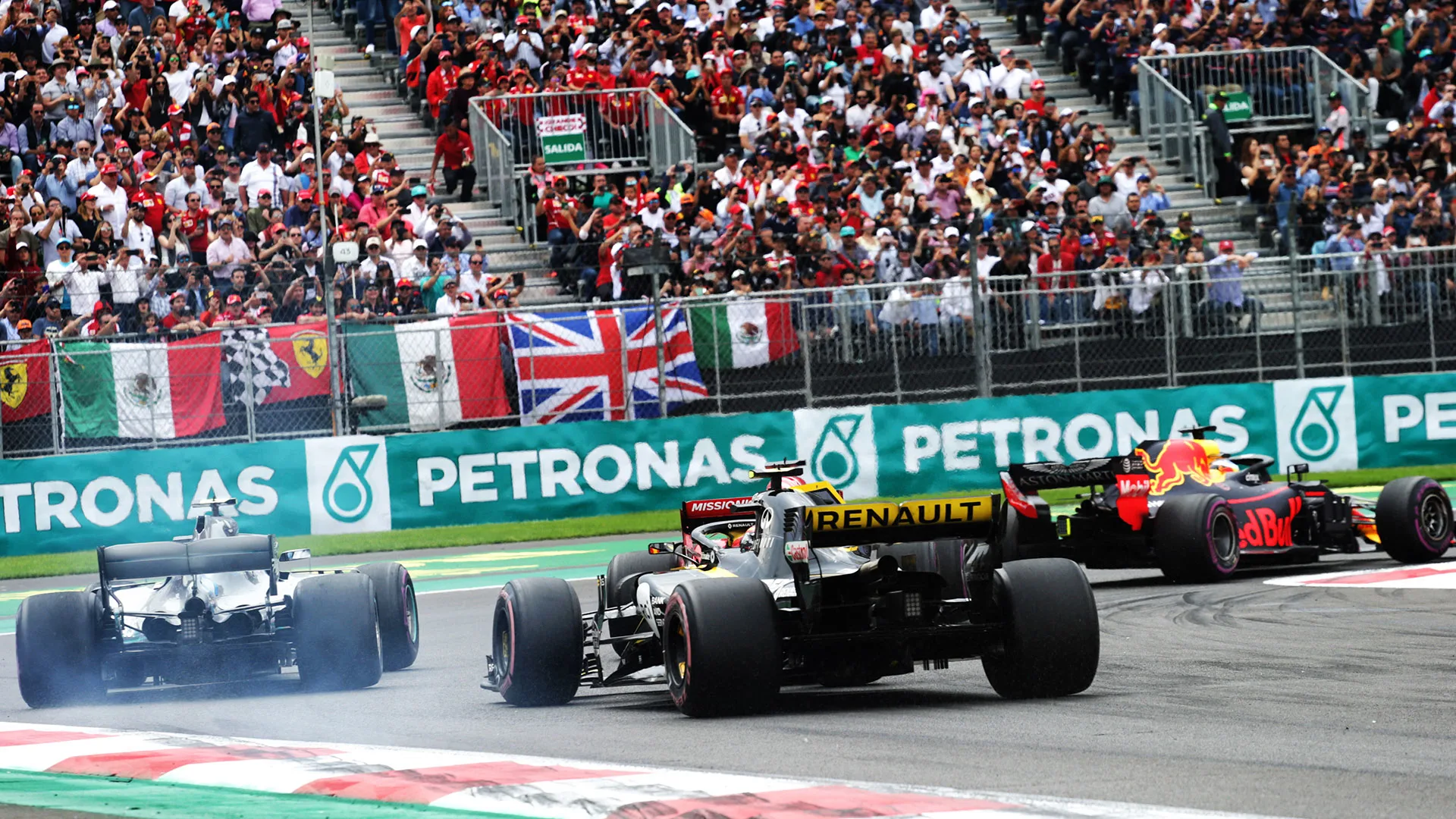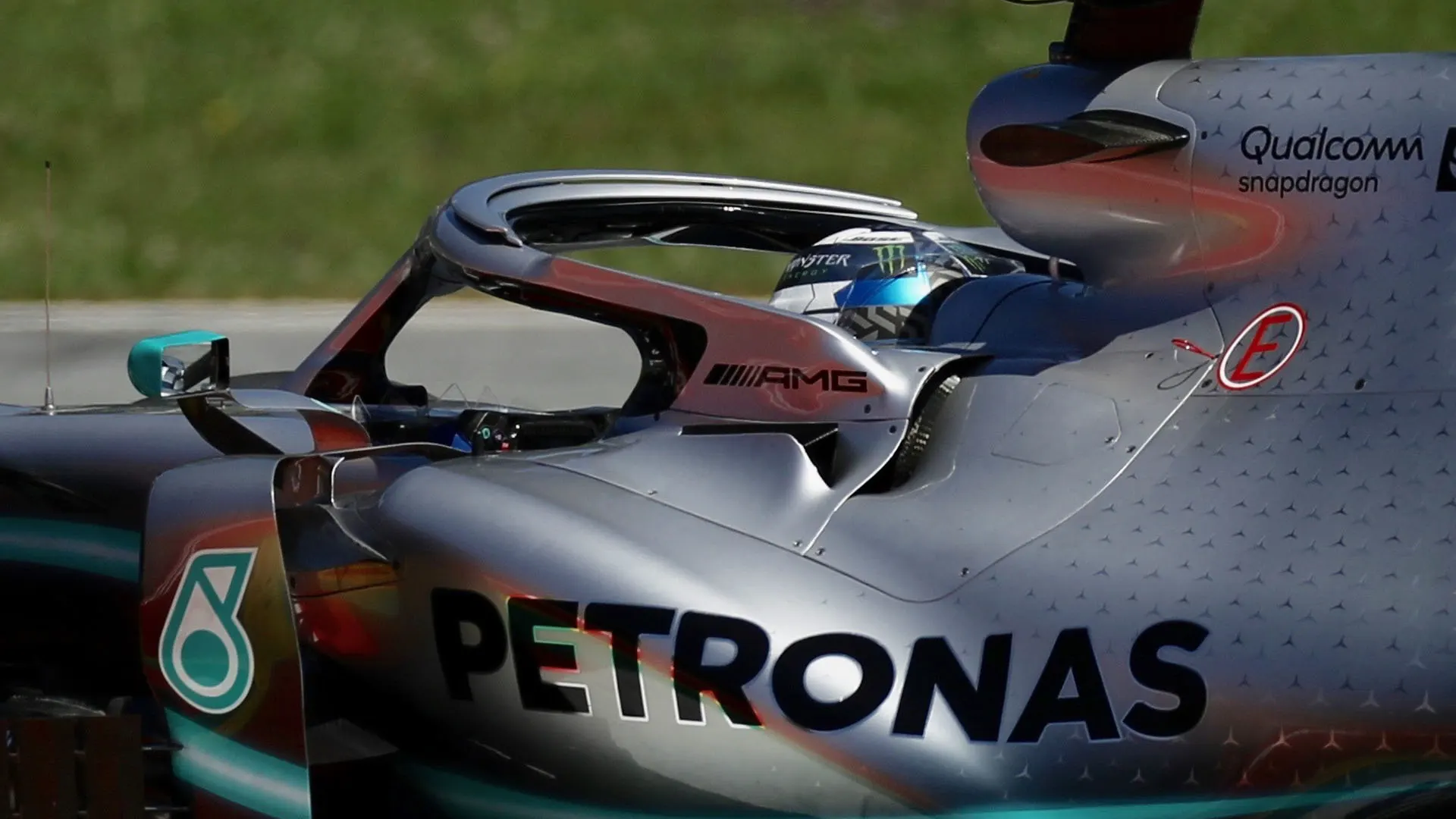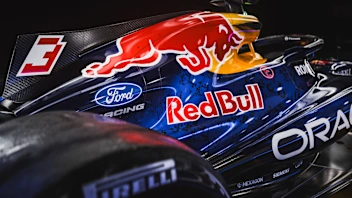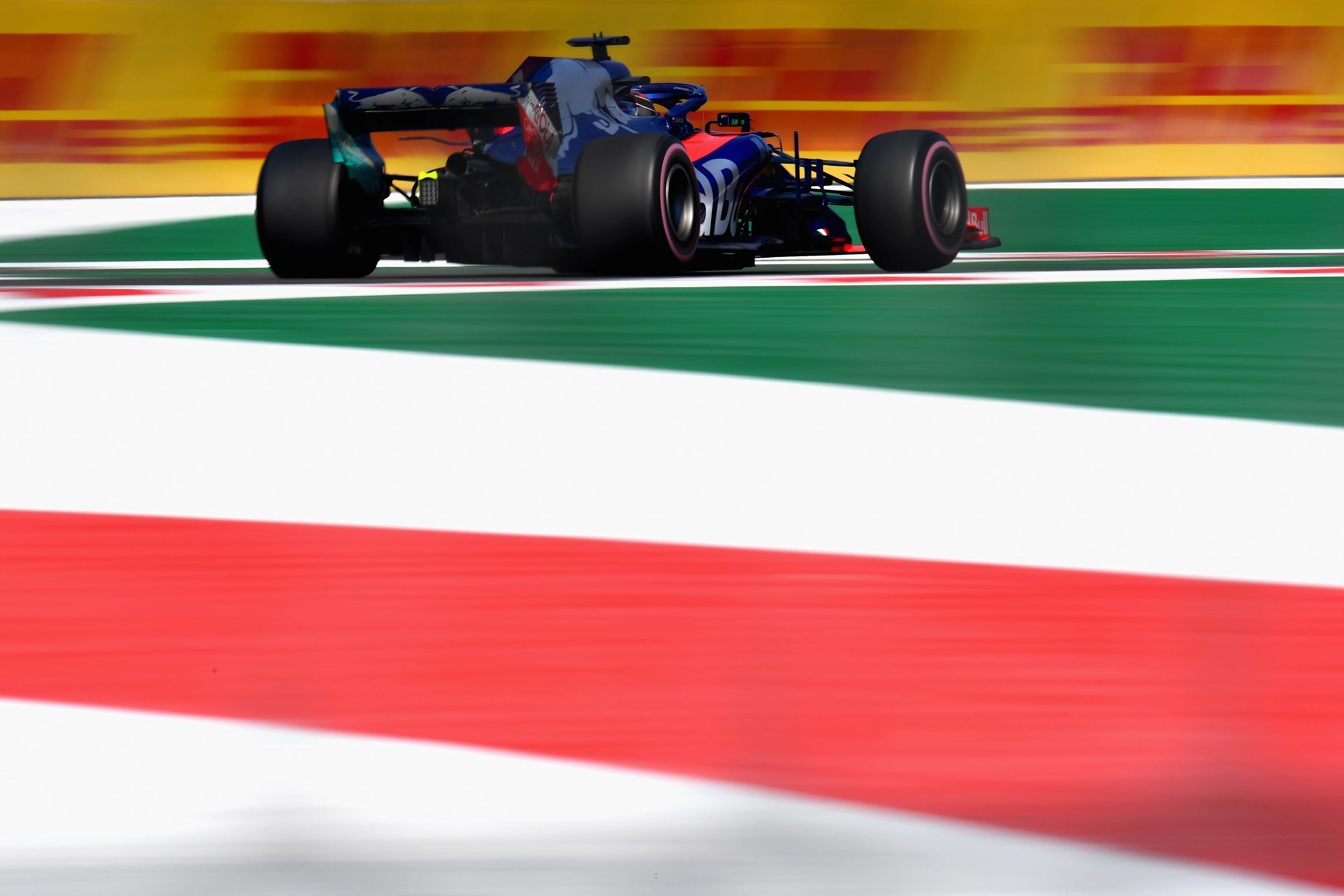Mexico City sits at an altitude of 2,250 metres above sea level, by far the highest of any circuit on the F1 calendar.
This has very significant implications upon the main performance parameters of the car. But more interestingly, the extent to which these changes effect each car differ and hence we invariably get something of a shake-up in the competitive order of the teams.
Taking a look at how the thinner air of such an altitude affects each of those car performance parameters will give some insight into why that shuffling of the pack tends to occur here.
At the lower pressures of high altitudes, air molecules spread out more so the air becomes less dense. The air in Mexico City will be approximately 25% less dense than that of a sea-level circuit such as, say, Bahrain. It will have around a quarter fewer air molecules in it. This has serious implications upon both the aerodynamic and engine performance of the car.
READ MORE: How Mercedes’ Suzuka update helped put them back on top

Downforce and drag
With 25% fewer air molecules, the pressure difference between the upper and lower surfaces of the wings will be correspondingly smaller, as will that between the underbody and the ambient pressure.
Consequently the same wings and underfloors will generate around a quarter less downforce. This means that at Mexico a full-fat Monaco wing will generate only about as much downforce as the cars see at Monza with their skinny wings.
READ MORE: 5 Reasons We Love... The Mexican Grand Prix
The reduction in downforce seriously reduces the braking and cornering potential of the cars. But what the thinner air also does, of course, is provide less resistance to the car passing through it. With around 25% less drag, the cars are flying down the straights much faster than they would with the same wings at a sea-level circuit. Or at least they would be if they had the same power – which they don’t, but we’ll come to that in a moment.
Each of the four engines has an official turbine ‘burst point’ – the maximum speed at which it is safe and at which a failure would not result in the bursting of the turbo casing and the spreading of high-velocity debris all over the track
The significant point is that the compromise between downforce and drag that gives the best lap time – which varies from track to track – will favour downforce more than the same track layout would at sea level. Generally, downforce is around three times as powerful as drag in determining lap time but, towards the upper end of the car’s downforce-generating capability, the last increments become very costly in terms of drag. Less so in Mexico, however.
Compared to other tracks, in the thinner air of Mexico, there is more time to be gained from each unit of downforce increase than is lost by the accompanying small increase in drag.
READ MORE: No customers in 2021 means fewer distractions – Renault
This has implications upon the competitive order – because some cars are inherently higher downforce and higher drag than others. When conceiving their cars, teams will choose their aerodynamic efficiency targets – i.e. how much induced drag is acceptable for a given downforce – and they will design and develop their car around those targets. Traditionally, Red Bull have favoured a very high downforce car even at the cost of some aero efficiency. Mercedes moved more towards that approach with this year’s W10. Ferrari’s SF90 is inherently a lower drag car than either of those but lacks their ultimate downforce too.
Engine power
In a naturally-aspirated engine, the thinner air directly reduces the power potential. With less air to burn it cannot achieve the same force of explosion within its combustion chambers. However, turbocharged engines such as those currently used in F1 do not suffer this effect directly because the pressure of the air fed to the combustion chamber is controlled by the turbo. A lower density of air allows the turbo to simply spin faster to achieve the same air pressurisation (and therefore density) as at sea level.
But there are complications. Each of the four engines has an official turbine ‘burst point’ – the maximum speed at which it is safe and at which a failure would not result in the bursting of the turbo casing and the spreading of high-velocity debris all over the track. This burst point speed of each engine design is verified and homologated and provided to the FIA. The turbos cannot be run beyond this speed, regardless of the regulated limit of 120,000rpm. That simply means if the burst speed could be made as high as 120,000rpm, they would be allowed to run at that. But the burst speed is usually below that limit.
The brakes are getting a tougher work-out because the cars are arriving faster at the corner but need to be slower into it than at a normal altitude because of the reduced downforce
READ MORE: How Ferrari and Mercedes’ six straight constructors’ titles stack up
As a general rule, the bigger the turbo the lower its burst speed will be.
Historically in this formula, Mercedes have favoured the biggest turbos; Renault the smallest. The sizing of the turbo is generally determined by how efficient the energy transfer is from the turbine to the crankshaft via the electronics and MGU-K. A less efficient system suffering greater losses will be less able to justify the extra cooling, volume and weight of a bigger turbo than a more efficient system. So in general terms, the more efficient the energy transfer is within the turbo compound loop, the bigger the turbo that can be justified. At conventional altitudes, this will tend to be a better performing engine.
However, if the altitude is such that in turning harder to compensate for the thin air, it takes the turbo close to its burst point, then that engine might be disadvantaged to one with a smaller turbo and higher burst point speed. Historically, the Renault has been a very competitive engine in Mexico City. Where the current four designs all figure at Mexico will be intriguing.

Cooling
Less air density means the air has correspondingly less cooling effect. So both engine and brake cooling tend to be very marginal at Mexico. The four engines vary in how much cooling they need and therefore the extent of aerodynamically-disruptive opening up of the bodywork is necessary.
The brakes are getting a tougher work-out because the cars are arriving faster at the corner but need to be slower into it than at a normal altitude because of the reduced downforce. The brakes can’t be used as hard (because the reduced downforce isn’t pressing the tyres as hard into the track) so they need to be used for longer. This increases the disc and caliper temperatures – but there is less cooling air available.
READ MORE: How cooling demands neutralised Mercedes’ threat in Austria
Track temperature
The lower air density sees a more sensitive correlation of sunlight to track temperature. So an ambient temperature of, say, 25 degrees Celsius can easily see a track temperature of up to 50 Celsius bringing problems with the tyres.
It is the combined effect of all of these factors that tends to give the Mexico grid an element of randomisation - and makes this weekend's race even more of a 'must-watch'.
Next Up
Related Articles
.webp) F1 IconsBrowning on why 'gentleman' Damon Hill is his hero
F1 IconsBrowning on why 'gentleman' Damon Hill is his hero.webp) Mekies expects ‘struggles’ amid power unit project
Mekies expects ‘struggles’ amid power unit project Every angle of Red Bull’s 2026 livery
Every angle of Red Bull’s 2026 livery Logan Sargeant confirmed as Ford WEC Hypercar driver
Logan Sargeant confirmed as Ford WEC Hypercar driver Hamilton to get new Ferrari race engineer for 2026 season
Hamilton to get new Ferrari race engineer for 2026 seasonStoffel.webp) UnlockedInside the F1 driver’s bubble – The Reserve Driver
UnlockedInside the F1 driver’s bubble – The Reserve Driver

